Author of the doctorate thesis, based upon his long experience and career in shipwrecks excavation and artifacts recovery in Nusantara region, especially in Indonesia, Vietnam, Thailand and Malaysia, Dr Michael, reported in this thesis as follow:-
“…..Identically, shaped artifacts are illustrated in Mitchiner (1979: 398 Fig. 5.87). In the accompanying text it is stated that small conical tin or gangsa (tin/copper alloy) ingots were being used for currency in the Malay Peninsular, where the tin was mined, from around the 13th century. These followed two evolutionary paths. On the one hand the cone became angular, truncated, hollowed out, and stamped to produce the familiar “tin hat” money of Pahang. On the other hand, the early cones were shaped into canoes m crocodiles, frogs, and other animals, which came to be known as “gambar”……”
“…. This array of artifacts is grouped by material and configuration, although the objects are of different size and shape. They would have remained in the miscellaneous and unidentified category had it not been for the apparent identification of the “canoe currency” above. One of these artifacts was analyzed by the Materials Institute of Western Australia and found to be 54% tin and 46% lead….”
“….The two or three bent lugs that characterize this artifacts group indicate the possible provenance. With the base metal apparently the same as that of the “canoe currency” possibility is raised to a strong likelihood. This “canoe currency” illustrated in Mitchiner (1979: 398) has been clenched onto a length of string. It is suggested here that the lugs on the clasp type artifacts were also clenched onto string, and therefore are different versions of gambar, small, shaped tin alloy ingots used for currency and originating in the tin producing regions of the Malay peninsular….”
“….. The lead content of these artifacts is unexpectedly high. There are lead deposits in the Malay peninsular and in west Sumatra, but they are not significant (van Bemmelen 1949. 161). Lead certainly increase corrosion resistance and malleability, which allows the lugs to be clenched onto a string and unclenched without breaking off. Of possible relevance are a number of lead alloy medallions found in Perak, Malaysia. They are 5 cm in diameter and bear a mythical bird on one face and three rows of Indianised script on the other. (Lamb. 1964. 168). While little is known about their provenance or use, apart from some speculation that they were temple money for offering and religious ceremonial celebration, they could be a derivative of the older gambar currency produced on the Malay peninsular….”
“…..Although the idea of coinage must have been long known in Indonesia from almost a millennium of trade with India, China and mainland Southeast Asia, there is no evidence of coins being used in the local economy until the 9th century. Up to that time, and for several overlapping centuries, such items, as iron bars, measures of cloth and rice, bronze ware, and certain types of gold rings were used as media of exchange in market contexts (Wisseman Chritie, 1996: 245). From archaeological evidence there is no indication that either Indian or Chinese coins pre-empted the use of indigenous coins in Java and Sumatra….”
“…..One of the main cargo items was tin. The tin was shipped in ingots of various shapes and sizes. By far the majority , some 755 pieces, were in the shape of a truncated pyramid. Eleven were in the shape of a cone, twenty in the shape of a flat disk, four in the shape of a flat bar, and two in the shape of a rod. Several hundred ingots weighing some 650 kg were recovered prior to documented excavation, they were almost all truncated pyramids, reportedly from an area
centered on E7 and E8. Many of the ingots were highly corroded, to the extent that only fragments of some ingots remained. Most of the pyramidal ingots were of a fairly standard size, approximately 11cm wide at the base and 4.5 cm high, weighing between 2.2 and 2.5 kg….”
“…..Scanning electron microscope elemental analysis was carried out on two of the tin ingots by the Materials Institute of Western Australia, They were found to be almost pure tin 99.6% in one case and 98.6% in the other , with only traces of zinc and lead. It would have been impossible to refine tin bearing ores to such purity using traditional techniques, therefore the metal has been obtained from smelting tin sands (cassurite), which are essentially pure tin oxide (SnO2)…..”
“…..As much as two thirds of the world’s tin deposits are founding Southeast Asia, along the so-called Tin Belt. The Belt actually starts in Yunnan in the north, where deposits are fairly scattered, and runs down the Isthmus of Kra, and the Malay Peninsular, to Bangka and Belitung in the south. Adjacent parts of Sumatra have a few small deposits, but the rest of Indonesia and all of the Philippines have no tin at all (Bronson 1992: 84)…..Before Yunnan began the large scale of development of its mineral resources, Southeast Asia would have held a virtual monopoly on tin supply. Java, Cambodia, southern Vietnam, the Philippines and the whole of central and eastern Indonesia would have been obliged to import all the tin they used from the moment they first began to manufacture bronze, even India relied on Southeast Asia for its supply of tin….”
“…..Kedah and Selangor on the west coast of the Malay Peninsular, and the Pattani on the east coast, were renowned for their tin. Kedah in particular, was noted for its tin by early Arab traders and geographers. Referring to the late 10th century, Indrisi says of Kalah (Kedah), “There is a tin mine rich in tin. The metal is very pure and bright, but merchants adulterate it after its extraction from the mine and take it away to other places” (Wheatey, 1966: 219). Ibn Khurdadhbih writes of Kilah (Kedah) , “ It contains famous mines of al-Qala’i tin and plantations of bamboo.” (Wheatly, 1966: 218) …..”
“….. A number of stone moulds for casting tin ingots have been found in Malaysia. A bi-faced mould for truncated pyramid ingots with a wide base flange was found in Malacca (Peacock, 1957: 185). This shape is the precursor to the so-called “tin hat” money of the Malay Peninsular, and post-dates the truncated ingot without a base flange. A stone mould for truncated pyramid ingots was found amongst mine tailings at Jelebu in Negeri Sembilan (Peacock 1957: 185). An ingot cast in this mound would have been a base width of 9 cm and height of 4.2 cm with an “X” decorating the top surface just like on the smaller tin ingots from the Intan Wreck. Two tin ingots were found in the remains of a dug-out canoe recovered from a depth of over 3 m in the Tronoh in Perak. (Sieveking 1955:209)….”
“…..The close similarity in size and shape between the Intan ingots and those produced in the Malay Peninsular strongly reinforces this surmise. The author is unaware of any evidence to suggest the shape and size of contemporary tin ingots produced in China, but the chances of them replicating those produced in the Malay Peninsular, right down to the marking seem too remote to entertain….”
“…..while the actual alloying material of the Intan pieces has not been analytically determined, tin is almost certainly the base metal. From macroscopic examination the material of these artifacts seem to be the same as that used in the “currency” discussed below, corrosion resistant tin alloy. The base metal, size and shape is the same as Mitchiner’s examples. If the artifacts are indeed a monetary equivalent, it seem that this canoe-shaped tin-alloy currency was in circulation at least three hundred years earlier than previously thought, and over a much wider area….”
Subscribe to:
Post Comments (Atom)
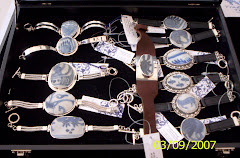


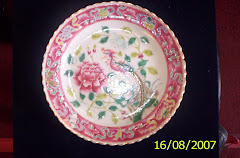


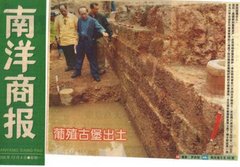
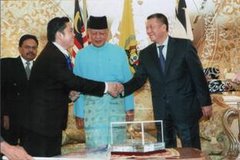
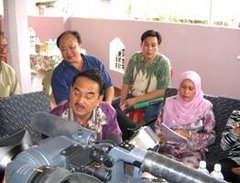

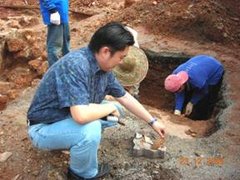
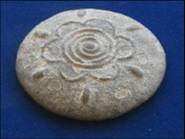

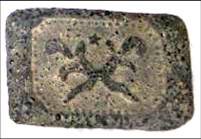

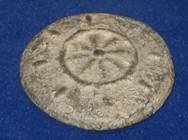

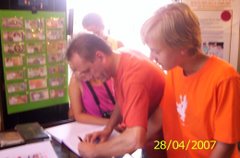
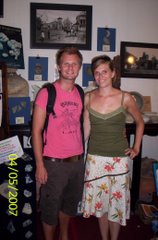
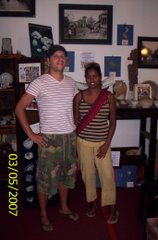
No comments:
Post a Comment